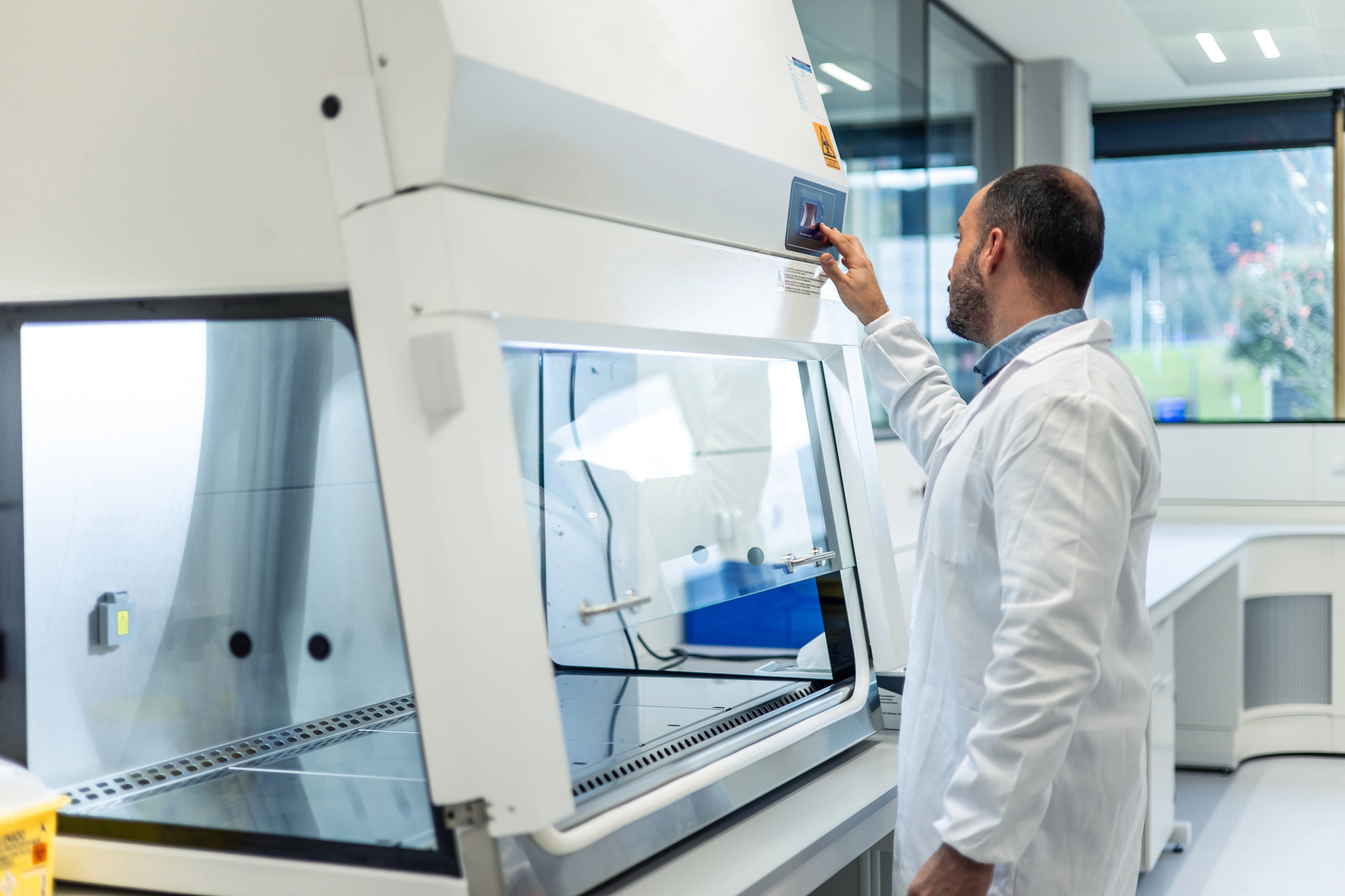A Guide To Fume Hood Calibration Procedures
A Guide To Fume Hood Calibration Procedures
Fume hoods are a key piece of equipment in labs. They keep harmful fumes, vapors, and dust away from workers, creating a safer working environment. However, like any piece of machinery, they need to be properly calibrated to function correctly.
Fume hood calibration is the process of measuring airflow to make sure the hood is operating at its best. It’s important to verify that the fume hood is working within the recommended parameters. Without regular calibration, you might not get the protection you need.

What Is Fume Hood Calibration?
When we talk about fume hood calibration, we’re referring to the testing and measurement of the airflow inside the fume hood. This checks that it is pulling the right amount of air to capture harmful chemicals, gases, or vapors produced during experiments. Calibration involves checking airflow at different points inside the hood and measuring how well it matches the specifications needed for safe operation.
Each fume hood has different requirements depending on its size and design. Some might need to meet higher airflow standards than others, especially if they are used for more dangerous substances. Calibration measures the minimum and maximum airflow to make sure everything is running smoothly.
Why Is Calibration Necessary?
Without calibration, it would be hard to know if the fume hood is doing its job properly. The goal of calibration is to check that the airflow is at the right rate to stop hazardous fumes from reaching the lab worker. This is especially important in labs dealing with volatile chemicals, radioactive materials, or other harmful substances.
Fume hoods work by drawing air in through the front sash and venting it out, typically through a duct system. If the airflow isn’t at the right level, toxic chemicals can slip past the hood’s protective barrier and pose a risk to the worker. Calibration checks these levels to guarantee the fume hood is still working as it should.
How Does the Calibration Process Work?
The calibration process involves measuring airflow at multiple points inside the fume hood. Depending on the type of fume hood, this can include testing the top, bottom, and sides. If the fume hood has a constant flow motor, the testing might be done at multiple points to check that the air is flowing properly.
The person calibrating the fume hood will use a digital anemometer to measure the airflow at these points. The readings help determine if the hood is operating within the recommended flow rates.
For example, a fume hood used for handling hazardous chemicals may need a flow rate of at least 100 feet per minute (FPM). If the airflow is too low, the hood won’t be as effective at trapping harmful fumes.
Calibration checks don’t just happen once. Regular checks, often done annually, are important to confirm that the fume hood is still functioning properly. This helps identify any potential issues before they become serious problems.
Fume Hood Classes and Their Significance
When fume hoods are calibrated, they are often rated based on their airflow performance. There are different “classes” of fume hoods. Each is suited for specific types of lab work.
For example, a Class 2 fume hood might have an average flow rate of 100 FPM. Meanwhile, a Class 4 fume hood, used for more hazardous materials, might require a flow rate over 200 FPM.
The class rating helps determine if the fume hood is suitable for handling specific chemicals or materials. If a hood falls into a lower class, it may not be safe to work with highly toxic substances. This is why proper calibration is so important. It checks that the fume hood is operating at the level required for the materials being used.
What Happens During a Calibration Test?
During a calibration test, the technician will measure airflow at various points inside the fume hood. They’ll check the air velocity and make sure it meets the required standards. The test will also involve checking the sash position, as the size of the opening can affect the airflow.
Once the test is complete, the technician will record the results, noting the airflow at each point and the overall rating of the hood. This information is usually stored in a departmental database for future reference.
Calibration records are important for tracking the performance of the fume hood over time. This helps you spot any gradual changes or issues that might need addressing.
What Happens if a Fume Hood Fails Calibration?
If a fume hood doesn’t pass its calibration test, it’s not necessarily the end of the world. However, it does mean something needs to be fixed.
If the airflow is too low, for example, the fume hood may need adjustments to the motor, ductwork, or sash. A failed calibration test may indicate that the fume hood is no longer functioning properly and could pose a safety risk to lab workers.
In some cases, it might be as simple as adjusting the fan speed or recalibrating the airflow system. In more serious cases, it might require replacing parts or even replacing the entire fume hood. Either way, you’ll need to act quickly to maintain lab safety and maximize the protection of the workers.
What Happens if a Fume Hood Fails Calibration?
If a fume hood doesn’t pass its calibration test, it’s not necessarily the end of the world. However, it does mean something needs to be fixed.
If the airflow is too low, for example, the fume hood may need adjustments to the motor, ductwork, or sash. A failed calibration test may indicate that the fume hood is no longer functioning properly and could pose a safety risk to lab workers.
In some cases, it might be as simple as adjusting the fan speed or recalibrating the airflow system. In more serious cases, it might require replacing parts or even replacing the entire fume hood. Either way, you’ll need to act quickly to maintain lab safety and maximize the protection of the workers.

How Often Should Fume Hood Calibration Be Done?
How often you calibrate your fume hoods depends on several factors. Some labs may only need annual calibration, while others might need to check their hoods more often due to the types of materials they work with. Calibration frequency is also affected by the age and condition of the fume hood. Older hoods might need more frequent checks as they start to wear out. A good rule of thumb is to have your fume hoods calibrated at least once a year. However, if you notice any issues with airflow or if the hood is used more intensively, more frequent checks might be necessary.
At PSA Laboratory Furniture, we have been designing and manufacturing custom lab solutions since 1983. We specialize in premium lab furniture and fume hoods that help you maintain safety in your lab. While we focus on custom solutions and high-quality products, we also know that fume hoods need to work as designed, and regular calibration plays a big part in that.
If you need assistance with your fume hood calibration or if you’re looking for quality laboratory products, reach out to us for a quote. We are here to help you with your lab’s safety and efficiency.